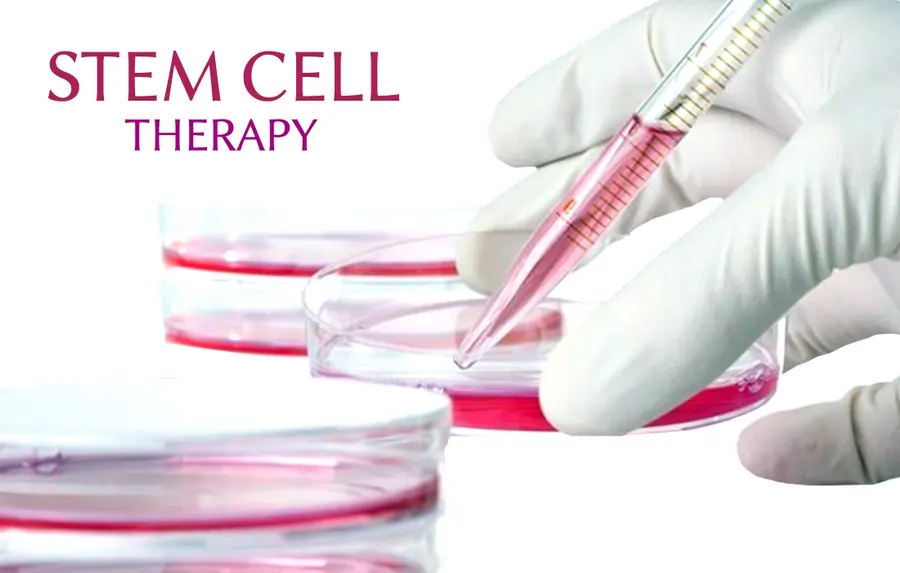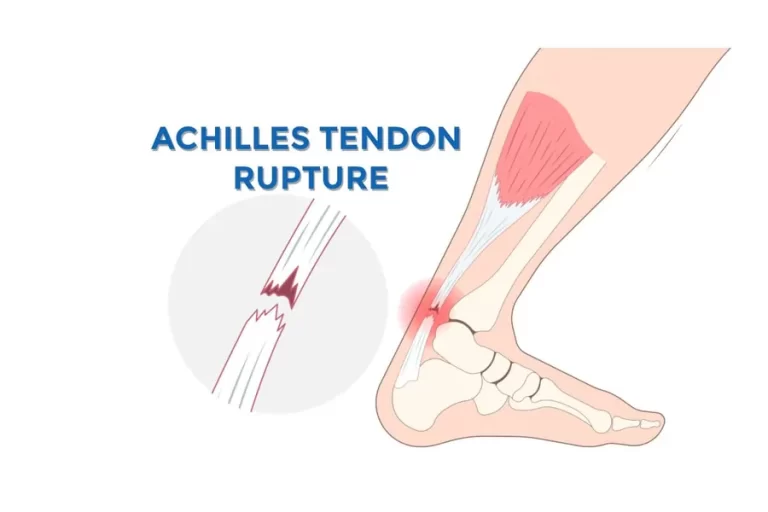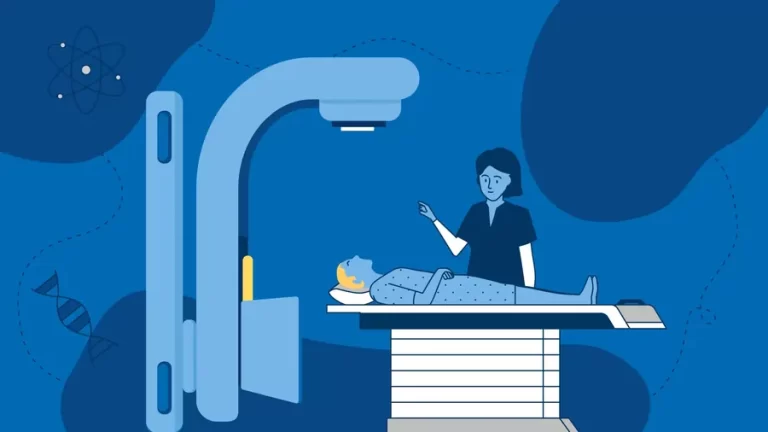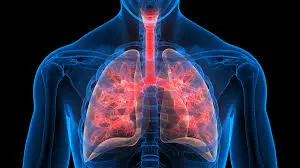Stem Cell Therapy
Introduction
Stem cells: what are they?
The human body contains unique stem cells, which can differentiate into various cell types. In contrast to normal cells (such as skin or muscle cells), stem cells are the body’s building blocks; they can divide to produce more stem cells may develop into cells with specific functions, such as blood, brain, and heart cells.
The body’s associated healing process can be thought of as a stem cell. In addition to helping to replace old or damaged cells, stem cells are essential for early growth and repair. Scientists think stem cells’ special properties will one day be utilized to generate new organs, heal damaged tissues, and treat diseases.
Scientists found that some bodily cells may produce other kinds of cells at the beginning of the 20th century.
The earliest blood-producing stem cells were found in bone marrow in the years 1950 and 1960.Because these cells could produce a wide variety of blood cells, they became the basis for bone marrow transplants.
2006: A major turning point was reached when Japanese scientists created induced pluripotent stem cells (iPSCs). These are mature cells that have been rewired to function similarly to embryonic stem cells. While avoiding some of the ethical issues surrounding the use of embryos, this finding opened up fresh opportunities for study.
Types of Stem Cells
There are three primary kinds of stem cells, each having unique characteristics and applications in research and therapy.
The source of embryonic stem cells (ESCs) is a few-day-old embryo that is often produced in a lab for reproductive treatments and given for study.
Power: They can differentiate into any form of human cell since they are pluripotent.
Use: Due to their adaptability, embryonic stem cells are highly useful in studies aimed at comprehending diseases and creating novel therapies.
Adult stem cells (ASCs) are derived from fully mature organs such as fat, liver, skin, and bone marrow.
Power: Their ability to differentiate into a variety of cell types is restricted due to their multipotency. Bone marrow stem cells, for instance, may produce several blood cell types, but not neurons or liver cells.
Use: Adult stem cells are already employed in blood cancer therapies such as bone marrow transplants. They are also being researched for potential use in medical therapy and organ repair.
Benefit: There is a lower chance of rejection because they originate from the patient’s body.
Power: They have pluripotency and can differentiate into any form of cell, much as embryonic stem cells.
Use: iPSCs enable scientists to test novel medications and investigate illnesses in a lab. Additionally, they provide a means of investigating regenerative therapies without the use of embryos.
Benefit: iPSCs may be produced from a patient’s cells and avoid several ethical issues.
How Stem Cell Therapy Works
A medical procedure called stem cell therapy employs stem cells to replace, repair, or regenerate the body’s damaged tissues and organs. The goal is to provide the body with strong cells that can develop into the kind of cells it needs to aid in its self-healing.
This is a basic explanation of how the procedure typically operates:
Origin and Collection:
First, physicians collect stem cells. These may originate from several sources, including:
Body parts of the patient (such as bone marrow or fat)
Stem cells produced in a lab, such as iPSCs or embryonic cells
Cell Processing: To make sure the stem cells are wholesome, sterile, and prepared for therapy, they are carefully processed after collection and occasionally multiplied in a lab.
Patient Preparation: Before receiving stem cells, the patient may undergo additional treatments, such as chemotherapy in the case of cancer, depending on the ailment being treated.
The 1950s and 1960s featured the discovery of bone marrow’s first blood-producing stem cells.
Healing and Regeneration: Stem cells start off in the body by either replacing damaged cells or helping the body’s cells heal themselves. They could occasionally additionally promote other healing processes or lessen inflammation.
Common Delivery Methods
The effectiveness of therapy depends on getting stem cells to the appropriate area of the body. Here are the most common ways stem cells are delivered:
- Injection (Local Delivery)
- Stem cells are directly injected into the specific area needing treatment, such as a joint (for arthritis), the spine (for injuries), or the heart (for heart disease).
- This method ensures the cells are placed exactly where they’re needed.
- Intravenous (IV) Infusion
- A vein is used to inject stem cells into the circulation.
- This method is often used when a more widespread effect is needed, like in autoimmune diseases or blood disorders.
- Surgical Implantation In Some advanced treatments, stem cells are implanted during surgery, especially when treating large or complex tissue damage (like rebuilding part of an organ or bone).
What Makes Stem Cells Unique?
Two amazing characteristics set stem cells apart from other cells in the body:
- Self-renewing
Through several rounds of cell division, stem cells can replicate themselves without developing specific functions. They can therefore continue to grow and offer an ongoing supply of new cells. - Difference
The many cell types that stem cells can differentiate into include blood, muscle, and nerve cells. We refer to this process as differentiation. It enables them to restore organs and tissues that have been harmed. Because they can replace injured or missing cells, they have the potential to treat illnesses for which there is presently no treatment.
Current Medical Applications of Stem Cell Therapy
Stem cell therapy is already being utilized in actual medical treatments, therefore, it is no longer only an experimental concept. Despite ongoing studies, stem cells are being effectively used by clinicians in a number of fields to combat disease or aid in the healing and restoration of damaged tissues.
Here are a few of the most popular and proven applications:
Leukemia and lymphoma are two blood disorders that are treated via bone marrow transplantation.
One of the first and most effective applications of stem cell treatment is this one. Hematopoietic stem cells, which may generate red, white, and platelet blood cells, are found in bone marrow.
How it works: Chemotherapy is frequently used to kill the damaged bone marrow in patients with blood malignancies like leukemia or lymphoma. After that, a transplant of healthy stem cells is administered to them.
Objective: The bone marrow is repopulated by the new stem cells, which then begin producing healthy blood cells.
Orthopedic Conditions
(Used for joint repair, cartilage regeneration, and injuries)
The use of stem cell treatment is growing in orthopedics and sports medicine.
- Applications:
- Healing torn ligaments and tendons
- Regenerating cartilage in knees, hips, and shoulders (like in osteoarthritis)
- Treating chronic joint pain
- How it works: The process involves injecting stem cells into the wounded tissue or joint after they have been taken from the patient’s bone marrow or fat.
- Goal: The stem cells aid in tissue reconstruction in some situations, improve healing, and lessen inflammation.
Burn Treatment with Skin Grafts
Additionally, stem cells are being employed to restore damaged skin, particularly in situations of persistent wounds or severe burns.
How it works: Researchers use patient or donor stem cells to create new skin. It is possible to transplant this fresh skin into burned regions.
The objective is to restore normal skin function, minimize scarring, and fast recovery.
Progress: Burn sufferers and those with extensive wounds that don’t heal correctly benefit greatly from stem cell-based skin regeneration.
Neurological and Autoimmune Disorders (New therapies for diseases including Parkinson’s, ALS, MS, and others)
Stem cells are showing potential for difficult-to-treat immune system and neurological disorders, although still mostly in the research or clinical trial stage.
Stem cell treatment has the potential to “reset” the immune system and reduce or halt the assault on nerve cells in multiple sclerosis (MS).
In order to preserve and maybe restore damaged neurons in Amyotrophic Lateral Sclerosis (ALS), researchers are experimenting with stem cells.
Parkinson’s disease: Research is investigating the possibility of using stem cells to restore dopamine-producing brain cells that have been destroyed.
Lupus and other autoimmune disorders: By replacing faulty immune cells with healthy ones, stem cell therapy could reduce symptoms and inflammation.
Emerging and Experimental Uses of Stem Cell Therapy
Regenerative Medicine
(Targeting the heart, pancreas, liver, and more)
One of the major promises of stem cell treatment is organ and tissue regeneration. Scientists are working on ways to use stem cells to fix or regrow damaged parts of major organs.
- Heart Repair: After a heart attack, the damaged heart muscle doesn’t usually heal well. Stem cells may help regenerate heart tissue and improve function.
- Pancreas Regeneration: Individuals with diabetes have insufficient insulin production by the pancreas. Scientists are working to develop new cells that produce insulin using stem cells.
- Liver Regeneration: Stem cells could help repair liver damage caused by diseases like cirrhosis or hepatitis, potentially avoiding the need for a transplant.
Repairing the nervous system (including Parkinson’s disease and spinal cord injury)
Since the neurological system is so complex, injury to it makes recovery challenging. However, stem cells provide fresh hope:
Stem cells are being employed in an attempt to replace the dopamine-producing brain cells that are destroyed in Parkinson’s disease. There are preliminary experiments under progress.
Researchers are investigating whether stem cells might help repair damaged nerve cells or regain function following severe spinal cord injury.
Stroke Recovery: Research is being done on the potential use of stem cells to restore brain tissue that has been destroyed by strokes.
Diabetes treatment (beta cell regeneration that produces insulin)
The treatment of type 1 diabetes is one of the most exciting applications of stem cell research. The immune system kills the insulin-producing beta cells in the pancreas in this condition.
Researchers are trying to use stem cells to produce new beta cells, which might help the body produce insulin again. Although obstacles like immunological rejection still exist, several early clinical trials have demonstrated effectiveness in helping people generate insulin again.
Anti-Aging and Cosmetic Applications
Stem cells are also making their way into the world of beauty and wellness. Though many claims in this space are still under scrutiny, there are serious scientific efforts being made.
- Skin Rejuvenation: Stem cell-based treatments are being used to improve skin texture, reduce wrinkles, and speed up healing after cosmetic procedures.
- Hair Growth: Some clinics use stem cells to stimulate hair follicles and treat hair loss.
- Anti-Aging Therapies: Researchers are exploring how stem cells might slow down aging by replacing damaged cells and boosting tissue regeneration.
Risks and Limitations of Stem Cell Therapy
Although stem cell therapy has a lot of potential, it is not a cure and, like all medical treatments, has drawbacks, hazards, and false information. Before undertaking or proposing stem cell operations, it is crucial to comprehend the facts.
1. Possible Adverse Reactions and Issues
Stem cell therapies include hazards, even if they might be beneficial in certain situations, particularly when applied in uncontrolled or experimental settings.
Among the potential dangers are:
Immune system rejection (in the event that the cells are donor cells)
Infections caused by contaminated materials or at the injection site
Creation of tumors (particularly when embryonic or induced pluripotent stem cells proliferate out of control)
Inflammation or blood clots following the injection
Treatment failure occurs when the stem cells are ineffective or have unintended consequences.
FDA/EMA Stance on Approved vs. Unapproved Treatments
FDA (U.S.)
- Like medications or biologics, stem cell treatments are governed by the Food and Drug Administration (FDA).
- Only a few treatments, such as bone marrow transplants for blood cancers, are fully approved.
- The FDA has warned against clinics that offer unapproved stem cell treatments without clinical trial data or safety testing.
- Treatments not approved by the FDA are considered experimental and should only be given as part of registered clinical trials.
EMA (Europe)
- Stem cell therapies must go through strict clinical testing and approval processes before being used.
- Any stem cell product used outside clinical trials is considered illegal or unauthorized unless given under specific hospital exceptions.
Summary
One of the most promising fields of contemporary medicine is stem cell treatment. These powerful cells may be used to cure wounds, diseases, and even organ damage. Researchers and medical experts are looking into this possibility.
The ability of stem cells to self-renew and differentiate into a wide variety of cell types makes them special. There are three main types: adult stem cells, embryonic stem cells, and induced pluripotent stem cells (iPSCs). Bone marrow transplants, orthopedic therapies, skin regeneration, and some neurological and immunological disorders are among the current medicinal applications. Recent studies concentrate on diabetes, heart repair, spinal cord injuries, and even anti-aging therapies.
Concerns over embryonic stem cells and the growth of unregulated, untested facilities are among the ethical and regulatory issues. Patients need to be aware of the dangers, adverse effects, and false promises that commercial clinics frequently make.
FAQS
Which diseases may be cured by stem cell therapy?
It is frequently used to treat degenerative illnesses, spinal cord injuries, certain autoimmune disorders, and orthopedic problems (such as arthritis and joint injuries). Diabetes, heart disease, and neurological problems are among the ailments for which research is still being conducted.
Is stem cell treatment safe to use?
In general, yes, particularly when local stem cells are used. However, the manner, condition treated, and provider all affect safety.
Which stem cell types are being used in therapy?
An embryo stem cells (more difficult and less prevalent)
Adult stem cells (found in adipose tissue, bone marrow, etc.)
Gene-reprogrammed induced pluripotent stem cells (iPSCs)
Are there dangers or adverse effects?
Infection, immunological responses, or the treatment’s ineffectiveness are all potential hazards. These hazards are increased when unapproved or unregulated therapies are used.
What is the time required for noticing results?
While some individuals experience relief in a matter of weeks, others can need many months. The condition and each person’s response determine the results.
How does the process work?
Stem cells typically get taken out (from fat or bone marrow, for example), processed, and then injected into the desired location. It is frequently an outpatient, less invasive surgery.
References
Mayo Clinic. https://www.mayoclinic.org/tests-procedures/bone-marrow-transplant/in-depth/stem-cells/art-20048117#:~:text=What%20is%20stem%20cell%20therapy,and%20more%20research%20is%20ongoing.
Cona, L. A., MD. (2025, April 9). Stem Cell Therapy: Overview, Benefits & Risks (2025). https://www.dvcstem.com/post/stem-cell-therapy
Stem cell delivery Methods | Swiss Medica. (2025, February 11). Swiss Medica. https://www.startstemcells.com/stem-cell-delivery-methods.html
Stem cell therapy: Benefits, risks, types & applications | Danaher Life Sciences. (n.d.). Danaher Life Sciences. https://lifesciences.danaher.com/us/en/library/stem-cell-therapy-harvesting-benefits-risks.html#:~:text=Stem%20cell%2Dbased%20therapy%20carries,the%20specific%20stem%20cells%20desired.
Stem cell therapy: Benefits, risks, types & applications | Danaher Life Sciences. (n.d.). Danaher Life Sciences. https://lifesciences.danaher.com/us/en/library/stem-cell-therapy-harvesting-benefits-risks.html#:~:text=Stem%20cell%2Dbased%20therapy%20carries,the%20specific%20stem%20cells%20desired.
Wikipedia contributors. (2025, April 29). Stem-cell therapy. Wikipedia. https://en.wikipedia.org/wiki/Stem-cell_therapy







